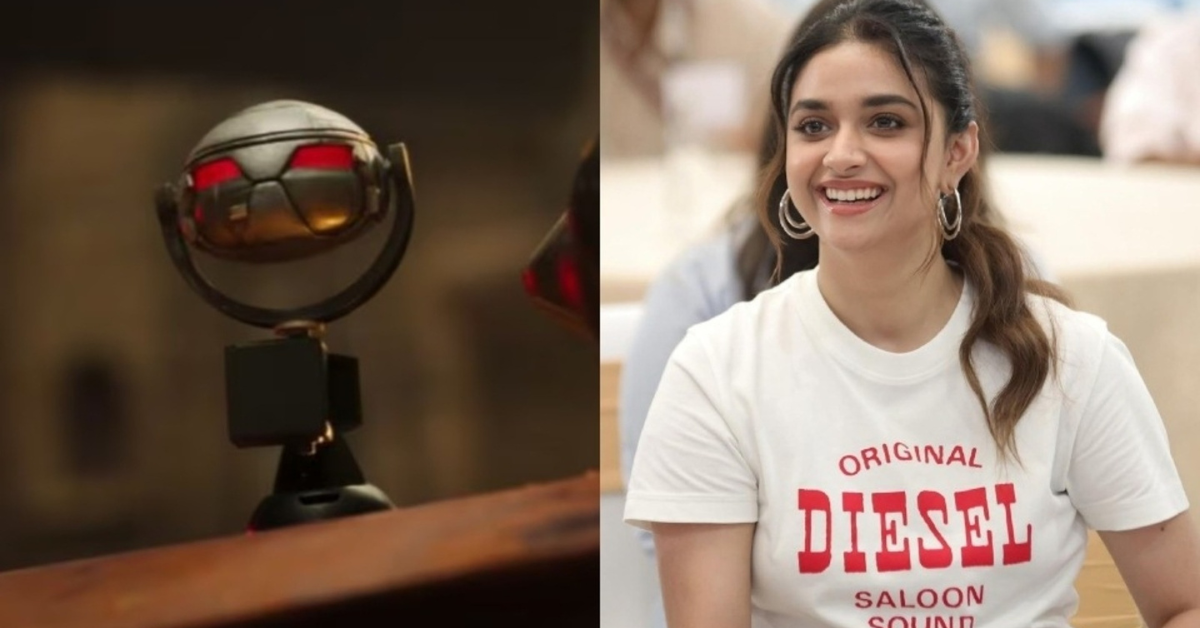Keerthy Suresh, the acclaimed actress known for her stellar performances in films like Mahanati, has taken on a unique role in Nag Ashwin’s ambitious sci-fi project Kalki 2898 AD. Released in June this year, the film stars Prabhas and Deepika Padukone, and has garnered attention for its innovative storytelling and impressive visual effects. In a recent interview with Galatta Plus, Keerthy shared intriguing insights into her role as Bujji, an AI bot, and the journey that led her to this distinctive character.
Turning Down the Human Role
During the interview, Keerthy revealed that she was initially offered a human role in the film, which she decided to decline. Reflecting on her decision, she mentioned, “Nagi offered me another role in the film, which I wasn’t sure of. It was a human role, and I’m glad I said no to it now.” Her uncertainty about the human role was soon replaced by a new opportunity when Nag Ashwin reached out with an intriguing proposition to voice an AI bot.
Embracing the AI Bot Role
The new offer came as a pleasant surprise to Keerthy. She recounted, “He later messaged me one day and said, do you want to peep through the wall at least? I said I would love to do it.” This led to her voicing the character BU-JZ-1, aka Bujji, an AI droid. Keerthy admitted that she initially didn’t fully understand the concept of voicing an AI bot but was excited to explore it. She elaborated, “I didn’t understand initially when he said he wanted me to voice an AI bot. I dubbed for Bujji & Bhairava (on Amazon Prime) before I worked on the film.”
The Process of Dubbing for Bujji
Keerthy Suresh’s role as Bujji involved extensive work in dubbing. She shared her experience of bringing Bujji to life: “I had a ball dubbing for the role in multiple languages, giving 5-6 modulations in each language to see which would suit it best.” She found dubbing for Bujji to be an enjoyable process, as it allowed her to experiment with different vocal modulations and nuances to fit the character perfectly. “Dubbing for a film is normally easier,” she added, highlighting the creative freedom it offered.
About Kalki 2898 AD
Kalki 2898 AD is set in a futuristic world and explores themes of artificial intelligence and advanced technology. In the film, Keerthy’s character Bujji is an AI droid constructed by Bhairava, played by Prabhas. The film also features Deepika Padukone as SU-M80, aka Sumathi, while Kamal Haasan plays the role of Supreme Yaskin, and Amitabh Bachchan portrays Ashwatthama. Disha Patani appears as Roxie, Bhairava’s on-again, off-again girlfriend. The film’s animated prelude, featuring Bujji and Bhairava, helped establish the film’s world and set the stage for the main narrative.
Keerthy’s Upcoming Projects
Following her work in Kalki 2898 AD, Keerthy Suresh has an exciting slate of projects lined up. She will soon be seen in several Tamil films, including Raghu Thatha, Revolver Rita, and Kannivedi. Additionally, she is set to make her Bollywood debut with Baby John, a remake of the Tamil film Theri. Directed by Atlee and starring Vijay, Baby John will feature Varun Dhawan alongside Keerthy, marking her entry into the Hindi film industry.
The Impact of Her Role
Keerthy Suresh’s decision to voice an AI bot in Kalki 2898 AD highlights her willingness to embrace unconventional roles and her versatility as an actress. Her journey from initially declining a human role to becoming the voice of a futuristic AI character underscores her commitment to exploring diverse facets of filmmaking. As Kalki 2898 AD continues to be discussed and analyzed, Keerthy’s performance as Bujji adds a unique and memorable dimension to the film.
Keerthy Suresh’s involvement in Kalki 2898 AD exemplifies her dynamic range as an actress and her readiness to experiment with different roles. Her portrayal of Bujji, coupled with her upcoming projects, positions her as a prominent figure in both Tamil and Hindi cinema. Fans and critics alike are eagerly anticipating her future work, and her role in Kalki 2898 AD stands out as a testament to her evolving career and creative choices.






